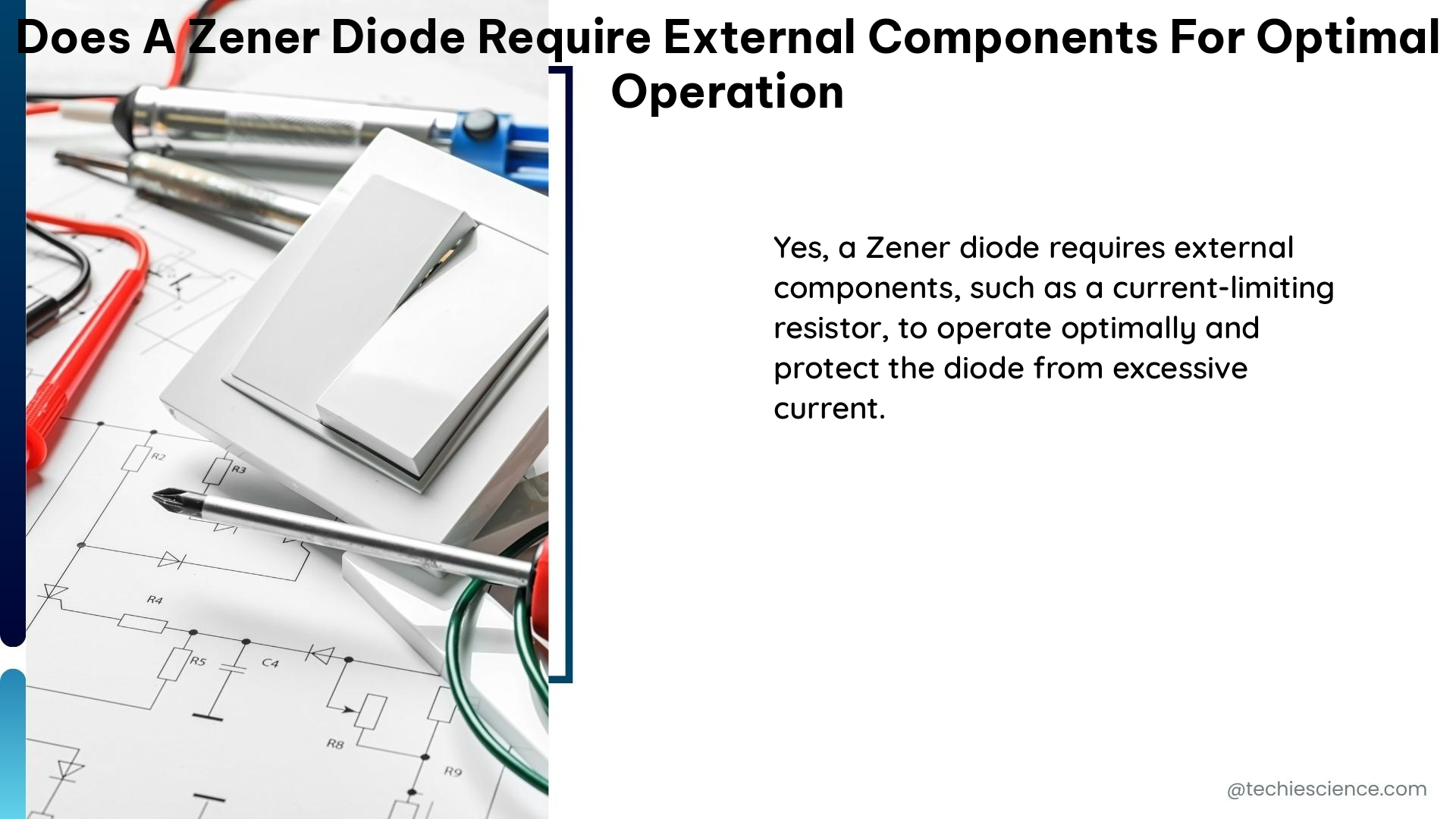Zener diodes are a specialized type of semiconductor diode that are designed to operate in the breakdown region, allowing them to maintain a stable voltage across their terminals. While Zener diodes can function on their own, they often require the use of external components to ensure optimal and reliable operation. This is because Zener diodes can be susceptible to damage from excessive current or voltage, which can lead to their failure if not properly managed.
Understanding Zener Diode Characteristics
Zener diodes are characterized by several key parameters that determine their behavior and performance:
-
Zener Voltage: This is the voltage at which the Zener diode operates in the breakdown region. Zener diodes are available in a wide range of Zener voltages, typically ranging from 2.4V to 200V.
-
Maximum Power Rating: This is the maximum power that the Zener diode can dissipate without being damaged. Exceeding this power rating can lead to the diode overheating and potentially failing.
-
Maximum Current Rating: This is the maximum current that the Zener diode can handle without being damaged. Exceeding this current rating can also lead to the diode overheating and failing.
-
Zener Impedance: This is the impedance of the Zener diode in the breakdown region, which determines how much the voltage across the diode will change with changes in current.
-
Temperature Coefficient: This is the change in Zener voltage with changes in temperature. Zener diodes can exhibit both positive and negative temperature coefficients, which can affect their performance in different applications.
External Components for Optimal Zener Diode Operation

To ensure the optimal and reliable operation of a Zener diode, the following external components are often used:
1. Series Resistor
One of the most common external components used with Zener diodes is a series resistor. The purpose of this resistor is to limit the current flowing through the Zener diode, preventing it from being damaged by excessive current. The value of the series resistor can be calculated using Ohm’s law and the Zener diode’s maximum power rating.
For example, if a 5.1V Zener diode has a maximum power rating of 500mW, the maximum current through the diode would be:
I_max = P_max / V_zener = 500mW / 5.1V = 98mA
To stay below this current, a series resistor with a resistance of at least:
R_series = (V_supply - V_zener) / I_max = (55V - 5.1V) / 98mA = 510Ω
would be required.
2. Current Limiting Resistor
Another external component that can be used with Zener diodes is a current limiting resistor. This resistor is placed in series with the Zener diode and is used to limit the current flowing into the diode, preventing it from being damaged by excessive current. The value of the current limiting resistor can be calculated using the Zener diode’s maximum current rating and the desired operating current.
For example, if a 5.1V Zener diode has a maximum current rating of 200mA and a desired operating current of 10mA, a current limiting resistor with a resistance of:
R_limit = (V_zener - V_forward) / I_desired = (5.1V - 0.7V) / 10mA = 440Ω
would be required.
3. Protective Measures
In addition to the series and current limiting resistors, Zener diodes can also benefit from other protective measures, such as:
- Fuses: Fuses can be used to protect the Zener diode from damage due to excessive current.
- Crowbar Circuits: Crowbar circuits can be used to protect the Zener diode from damage due to excessive voltage.
These protective measures can help to ensure the long-term reliability and performance of the Zener diode in the circuit.
Conclusion
In summary, while Zener diodes can function on their own, they often require the use of external components to ensure their optimal and reliable operation. These components include series resistors, current limiting resistors, and various protective measures such as fuses and crowbar circuits. By properly managing the current and voltage across the Zener diode, these external components can help to prevent damage and ensure the long-term reliability of the Zener diode in the circuit.
References
- Zener Diode as Voltage Regulator Tutorial. Electronics Tutorial about the Zener Diode and how Zener Diodes can be used with a series resistor to produce a Zener Diode Voltage Regulator. https://www.electronics-tutorials.ws/diode/diode_7.html
- Zener diode – Wikipedia. A Zener diode is a special type of diode designed to reliably allow current to flow “backwards” (inverted polarity) when a certain set reverse voltage. https://en.wikipedia.org/wiki/Zener_diode
- 1N4728A to 1N4761A Zener Diodes – Vishay. 2021-11-25 • Standard Zener voltage tolerance is ± 5 % … PART. NUMBER. ZENER VOLTAGE. RANGE (1). TEST … ALL PRODUCT, PRODUCT SPECIFICATIONS AND DATA ARE … https://www.vishay.com/docs/85816/1n4728a.pdf

The lambdageeks.com Core SME Team is a group of experienced subject matter experts from diverse scientific and technical fields including Physics, Chemistry, Technology,Electronics & Electrical Engineering, Automotive, Mechanical Engineering. Our team collaborates to create high-quality, well-researched articles on a wide range of science and technology topics for the lambdageeks.com website.
All Our Senior SME are having more than 7 Years of experience in the respective fields . They are either Working Industry Professionals or assocaited With different Universities. Refer Our Authors Page to get to know About our Core SMEs.